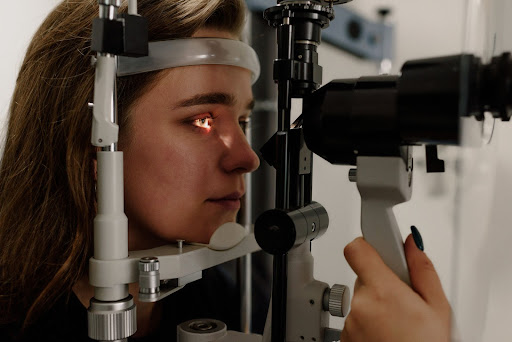Our eyes, as the most vital sensory organ of the body, are instrumental in how we experience and navigate the world. LASIK provides a transformative lens to behold life with renewed clarity. However, like all medical procedures, it’s essential to be well-informed about the potential complications and how to minimize them, especially when delving into LASIK eye surgery complications.
Understanding the Potential Complications of LASIK Eye Surgery
The promise of LASIK surgery lies in its ability to drastically improve vision, mitigating the need for glasses or contact lenses. While a vast majority revel in the liberating results of LASIK, being aware of potential complications of LASIK underscores the importance of choosing an expert surgeon and adhering to recommended post-operative care.
Complications After LASIK Eye Surgery
Though LASIK surgery boasts a high success rate, it’s not without potential complications. Recognizing these complications after LASIK eye surgery can aid patients in ensuring they take necessary precautions, maximizing the potential for optimal results.
Post-LASIK procedure, patients may encounter certain temporary effects. Mild discomfort is occasionally reported, although it’s often short-lived and easily managed with prescribed medications. Some might also experience temporary blurred or hazy vision, which resolves within hours or days as the cornea heals. Additionally, dry eyes can be a side effect, but they are typically managed with lubricating eye drops and tend to improve as the eyes heal.
Rare Long-Term Complications
As we delve deeper into the potential long-term complications of LASIK, we must note that advancements in technology and procedural techniques have considerably reduced these risks.
- Glare, halos, and double vision: These visual aberrations, often more pronounced during nighttime or in dimly lit surroundings, can occur due to minute irregularities on the reshaped cornea. With time, as the cornea settles, these symptoms frequently diminish or entirely dissipate.
- Under-correction or over-correction: On occasion, the laser may not remove the precise amount of corneal tissue necessary, leading to an under or over-correction of vision. Subsequent corrective procedures or adjustments can often rectify this.
- Infection or inflammation: Adhering rigorously to post-operative instructions circumvent this rare complication. Using prescribed antibiotics and anti-inflammatory eye drops, as well as maintaining ocular hygiene, is crucial.
- Regression: Over time, some patients might observe a slight drift back towards their prior vision. Regular eye examinations can detect such regressions early, allowing timely interventions if necessary.
While there can be complications associated with LASIK, they are, for the most part, rare and manageable. Commitment to post-operative care, combined with the expertise of a seasoned surgeon, can significantly minimize these risks, paving the way for a lifetime of clearer vision.
Overview of the LASIK Eye Surgery Complication Rate
When considering any medical procedure, understanding its safety profile is essential. In vision correction, the data surrounding LASIK is particularly reassuring.
General Complication Rate
The effectiveness and safety of LASIK are underscored by robust data. Most patients undergo the procedure and achieve their desired outcomes without a hitch. However, as with any surgical intervention, a small percentage might face LASIK eye surgery complications. The Refractive Surgery Council (RSC) Editorial Advisory Board has reported that the LASIK complication rate is less than 1%. To put this into perspective, this is significantly lower than many other corrective surgical options.
Traditional corrective surgeries such as RK (Radial Keratotomy) have shown varied complication rates. According to the American Academy of Ophthalmology (AAO), RK, an older procedure that LASIK has primarily replaced, presented complications in some patients, such as fluctuating vision throughout the day. Studies noted by the AAO have reported complication rates as high as 43% in certain RK patient groups.
Understanding the difference between temporary post-operative discomforts, common after many surgical interventions, and actual LASIK eye surgery complications is crucial. Especially when compared to traditional methods like RK, the notably low complication rate of LASIK emphasizes its relative safety and effectiveness for individuals desiring improved vision without the need for glasses or contacts.
How to Minimize Complications from LASIK Eye Surgery
Addressing potential LASIK eye surgery complications begins long before the actual surgery. From choosing the right surgeon to understanding the procedure intricacies, a proactive approach can drastically reduce risks and pave the way for optimal results. Here’s a structured guide to ensure patients take all the essential steps before and after their LASIK surgery.
Pre-Surgery Precautions
The surgeon’s expertise is the cornerstone of a successful LASIK procedure. A well-chosen surgeon brings skill to the table and an in-depth understanding of potential LASIK eye surgery complications and how best to avoid them. For instance, Dr. Manger of Saddleback Eye Center is highly regarded and trusted, having completed over 94,000 procedures. When exploring options for surgeons, it’s essential to take into account the following:
- Credentials: Your chosen surgeon should be board-certified with comprehensive LASIK-specific training and surgical experience, showcasing their specialized expertise.
- Patient Feedback: Delve into reviews and testimonials. Consistency in positive feedback indicates a surgeon’s competence and patient-centric approach.
- Complication Rates: Transparent communication about LASIK eye surgery complications rates provides insight into the surgeon’s reliability and expertise.
Choosing a surgeon is more than just reviewing credentials; it’s about entrusting someone with the future clarity of your vision. Ensuring this trust is placed wisely is fundamental.
Comprehensive Pre-Operative Assessment
Before finalizing the decision for LASIK, two critical stages ensure you’re primed for the procedure:
Exhaustive Examination: A detailed eye examination is not a mere formality. It determines the compatibility of LASIK with your unique eye structure and health.
Risk Discussion: This is an opportunity for an in-depth dialogue with your surgeon. Understanding the potential risks, both general and specific to your case, forms the bedrock of informed decision-making.
At Saddleback Eye Center, we prioritize patient safety and optimal outcomes. Implementing a comprehensive 2 – 2.5 hour, 14-test diagnostic exam ensures a meticulous understanding of each patient’s eye health. With the foundation set through an informed surgeon choice and a thorough assessment, you’re not only prepared for the surgery but also armored against potential complications.
Post-Surgery Care
Following the LASIK procedure, you must remain vigilant and attentive to your eyes’ needs. The first few hours and days are critical in setting the course for optimal healing without complications. Here’s what you need to focus on:
Adherence to Guidelines: Follow your surgeon’s post-op directives to the letter. This often includes the timely administration of medicated eye drops, which are crucial in warding off infections and controlling inflammation.
Activity Restrictions: Certain activities can directly threaten your healing eyes. For instance, swimming can expose your eyes to contaminants, risking infection. Being cautious and avoiding such activities in the immediate aftermath ensures a complication-free recovery.
By adhering to these guidelines with unwavering diligence, the path to recovery is smoothed, minimizing the possibility of LASIK eye surgery complications and ensuring the clarity of vision achieved is long-lasting.
Long-Term Care
After undergoing the LASIK procedure, remaining committed to diligent eye care is essential. Periodic check-ups are crucial: they not only ensure post-surgical healing is on track but also act as an early warning system for potential complications. Maintaining these regular visits, issues can be spotted and addressed at their onset.
In addition, daily practices play a pivotal role in long-term eye health. Adopting simple habits, like wearing sunglasses regularly, safeguards the eyes from harmful UV rays, reducing the potential for post-surgical complications.
It’s also of utmost importance to keep lines of communication open with your medical professional. Never hesitate to bring up even seemingly minor symptoms; early detection and intervention are vital in preventing these symptoms from developing into more severe LASIK eye surgery complications.
While the surgeon plays a pivotal role, the patient is also instrumental in ensuring the surgery’s success. By actively participating in both the preparatory and post-operative phases, understanding potential risks, and taking prescribed precautions, patients can significantly influence their outcomes, minimizing LASIK eye surgery complications and maximizing the benefits of clearer vision.
Your Pathway to Perfect Vision
The transformative promise of LASIK surgery hinges on an intricate blend of expert guidance and patient commitment. When equipped with the proper knowledge and the assistance of a trusted surgeon like Dr. Manger, the path to crystal-clear vision becomes a reality. Through Saddleback Eye Center’s exhaustive procedures, we prioritize each patient’s safety and tailor our approach to ensure the best possible outcomes.
Taking the LASIK leap is more than just an eye procedure; it’s a life-changing decision. Ready to unlock a world of visual clarity? Reach out today and embark on a journey toward a clearer tomorrow.



